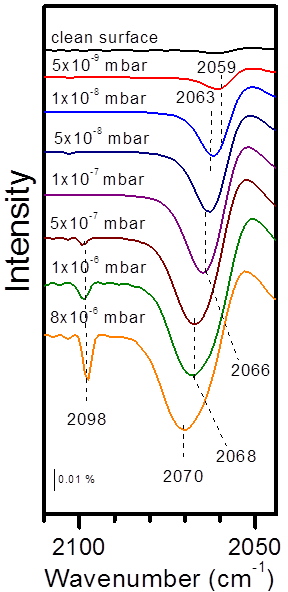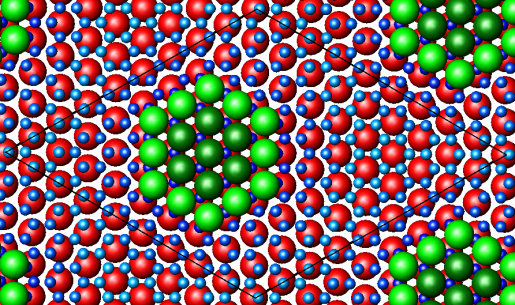

Poster
Monitoring the interaction of CO with graphene supported metal nanoparticles by vibrational spectroscopy
1Deutsches Elektronen Synchrotron DESY, Notkestr. 85, 22607 Hamburg, Germany
2Department of Physics, University Hamburg, D-20355 Hamburg, Germany
Small metal nanoparticles dispersed on porous substrates have gained increasing interest in surface science because of their widespread applications, especially in heterogeneous catalysis. It was previously shown that nanoparticles grown through UHV vapor deposition of material form ordered arrays on graphene substrates using the moiré of graphene/Ir(111) as a template. The size of these nanoparticles can be carefully controlled with diameters smaller than 2 nm on graphene/Ir(111) by the amount of deposited material. [1,2]
In this contribution we report so far the first describing vibrational spectroscopic studies on Ir, Pt and Au metal-covered graphene/Ir(111) substrate using CO as probe and/or reactant to monitor the frequency of C-O binding to the metal surface. The ultrahigh vacuum IR spectroscopy (UHV-IRRAS) apparatus allowed us to record high-quality IR data and turned out to be a powerful tool to investigate well-arranged metal/graphene/Ir(111) system. Deposition of metal nanoparticles onto the graphene/Ir(111) results in different vibrational C-O bands, while CO does not adsorb on pure graphene/Ir(111) surface. The adsorption, stability and sintering of metal clusters on graphene/Ir(111) are further investigated with respect to the position and intensity of the C-O stretching band. It is found that the small clusters are unstable upon CO adsorption and sintered after binding to CO molecules, which weakens the bonding of the nanoparticles to the graphene. This leads to weaken and consequently a red shift of the C-O stretching vibration band in IR spectra. [3]


Figure 1: (left) UHV-IRRAS of CO adsorption on graphene supported Ir nanoparticles at 195 K; (right) cluster model for 0.2 ML Ir nanoparticles on Graphene/Ir(111) substrate.
[1] D. Franz et al., Phys. Rev. Lett. 110, 065503 (2013)
[2] S. Rusponi, et al., Phys. Rev. Lett. 105, 246803 (2010)
[3] H.Noei, et al., in preparation (2015)